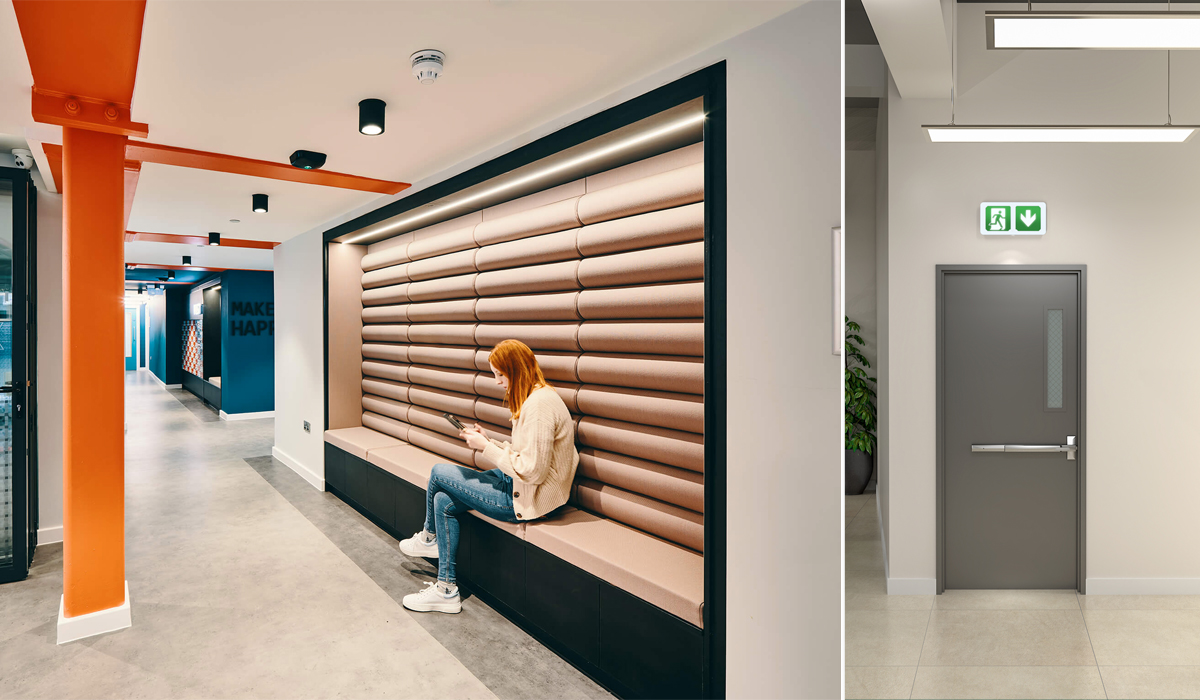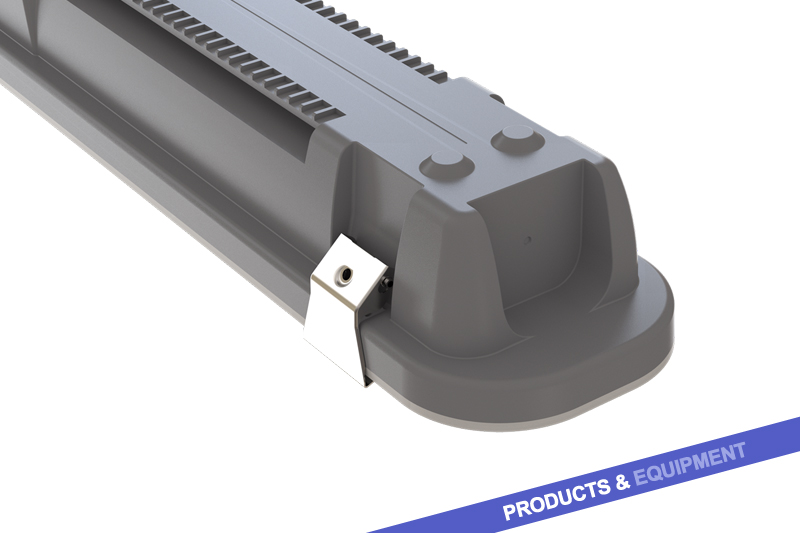Critical in safeguarding lives during power outages and crisis situations, emergency lighting is an essential component of lighting design in public buildings. Chris Anderson, Technical Manager at Ansell Lighting, explores the diverse range of products and technologies available for wholesalers to stock in order to support customers to create reliable and compliant emergency lighting solutions.
In the face of unforeseen emergencies or power failures, the reliability and functionality of emergency lighting systems is paramount to building occupant safety, ensuring premises can be easily evacuated or remain occupied when building illumination fails.
Regulations
Required by law in all public, commercial and high occupancy residential buildings, emergency lighting rules are stipulated under the Regulatory Reform (Fire Safety) Order 2005, The Health and Safety at Work Act, Building Regulations, The EU Workplace Directive, Fire Safety Regulations and the European Standard BS EN 1838.
With such a wide variety of regulations to meet, it’s rare that individual project installations have the same requirements and so, for wholesale customers seeking to enhance customer loyalty and sales revenues, it is imperative that a range of different products and features are available for purchase and specification.
Types of emergency lighting
Split into three separate areas, emergency lighting encompasses escape route lighting, open area lighting (or anti-panic lighting) and high-risk task lighting.
As its name suggests, escape route lighting is specifically intended to illuminate pathways and exits for the safety of people leaving a location. Emergency exit signs and exit boxes are most commonly specified here, usually installed above head height on walls or suspended from ceilings and feature a running white man on a green background.
Open area lighting on the other hand, is designed to light up spaces to allow occupants to both see and head to evacuation routes. Downlights, twin spots and bulkheads are the most popular options, usually specified with interior design/aesthetics taken into account.
High risk task lighting is designed to allow those involved in a potentially dangerous processes or situations to follow shut down procedures. Again heavy duty, emergency compliant bulkheads and downlights are commonly installed in such spaces to provide maximum visibility in challenging environments.
Alongside a broad range of product types, wholesalers should also ensure the range they offer provides a variety of testing options and power sources.
Testing
Testing of emergency luminaires is a legal requirement in the UK, with required standards and regulations outlined in the Regulatory Reform (Fire Safety) Order 2005, The Health and Safety at Work Act, Building Regulations, The EU Workplace Directive and the Fire Safety Regulations.
When it comes to product testing options, there are two common choices – manual or automatic.
Where a product requires manual testing, all lighting circuits and luminaires will be isolated, before a tester passes through the whole building or circuit, checking that each emergency luminaire is operating correctly. The mains supply is then restored and the whole building or circuit must be walked again to check that the emergency lights have returned to being operational.
With intelligent self-test lighting systems, when the units are first installed, the fitter will randomly select a test date of between 200 and 365 days. Once this date is set it will continue to test at the same time every year for a full three-hour test. Every 30 days the installation will also be automatically tested for ten minutes. A small LED button on the fitting will illuminate to show either regular function or that a fault has occurred providing much speedier and more cost-effective testing maintence.
Taking this intelligent testing one step further, recent advances in technology have led to the creation of dashboards which enable connected lighting to be centrally monitored and tested wirelessly and automatically at the touch of a button. The dashboard is able to drill down and highlight if an individual luminaire or driver is outside of expected operational parameters. This indicates that the luminaire or driver may need attention to proactively repair or replace, rather than waiting for a failure.
Specification of testing options are often budget or circumstance dictated so wholesalers should ensure they stock both manual and self-test fittings, to maximise versatility and sales potential.
Power
Power source is another important consideration for emergency lighting installations. ‘Self-contained’ and ‘central battery source’ are the two main types of power source. Both serve the purpose of providing emergency lighting during power outages or failures but have distinct characteristics and offer different benefits.
Self-contained systems have their own power supply which means they are powered by a back-up source such as a generator. Operating independently of each other, a major benefit of using this type of power source is that if one unit fails, the operation of other luminaires is not affected. This independence offers flexibility in the placement and installation of individual fixtures, making them suitable for a wide variety of building layouts and retrofit projects. Typically easier and quicker to install, self-contained emergency lights do not require extensive wiring between fixtures and a central power source. They are usually more cost effective in smaller spaces and maintenance and testing can be more straightforward.
Emergency lighting systems operated from a central battery source on the other hand, offer more efficient battery management and can often provide longer backup power durations. They are also much less susceptible to ambient temperature and air conditions as the battery supply is housed in a protective environment. Central battery source systems also allow for centralised management and monitoring of the entire emergency lighting network which can be advantageous in larger buildings or facilities where comprehensive control is essential.
As with emergency testing options, ultimately, project budgets are usually the main determiner in power source specification choice but in most cases, specifiers will prescribe a combination of the two to provide complete protection during times of power failure.
Consequences
The consequences for business owners and responsible persons who fail to comply with fire safety legislation and emergency lighting rules can be very serious. Electrical installers and specifiers are under increasing responsibility to ensure that the emergency lighting systems they create provide reliable and continuous illumination during power outages or emergencies. By stocking a varied and comprehensive range of emergency lighting fitting, wholesalers can ensure they are able to fully service customer projects and maximise sales revenues.
For more information, click here





